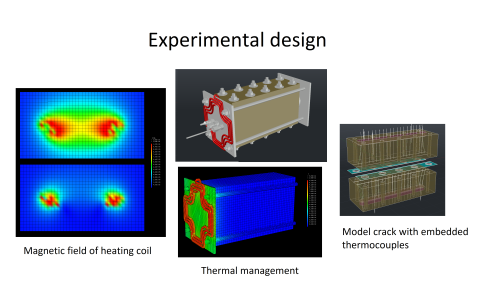MACENA 2Quantifying the behaviour of steam flowing through cracks in concrete for nuclear safety assessment
The inner concrete containment structures of pressurised water reactors must be able to contain steam at the pressures and temperatures associated with a leak in the primary circuit (160°C and 5 bar). The behaviour of high-temperature steam within the cracks in concrete is therefore a concern for the organisations that operate these reactors. The aim of this project is to measure the temperature profile over time within model cracks as steam/nitrogen mixtures flow through them to high-accuracy. It is anticipated that the complex interplay of processes occurring during the experiments (thermal conduction, convection, compressible flow, turbulence, transient pressure changes condensation and evaporation) can be better quantified in simulations using these data. In order to obtain the accuracy required using conventional thermocouples (better than 1°C) under the experimental conditions requires careful consideration of all the possible sources of interference and variability. The best possible mastery of the experimental conditions is also of paramount importance with an emphasis on an experimental setup that ensures the delivery of well characterised steam/nitrogen mixtures (temperature, pressure, mass flow and composition) without risking condensation before they reach the crack. Castem has therefore been used extensively to guide the design of the experiment from minimising interference from the magnetic fields of heating coils, to the thermal management of the steam delivery system to the assessment of the influence on the temperature of the thermocouples themselves!
